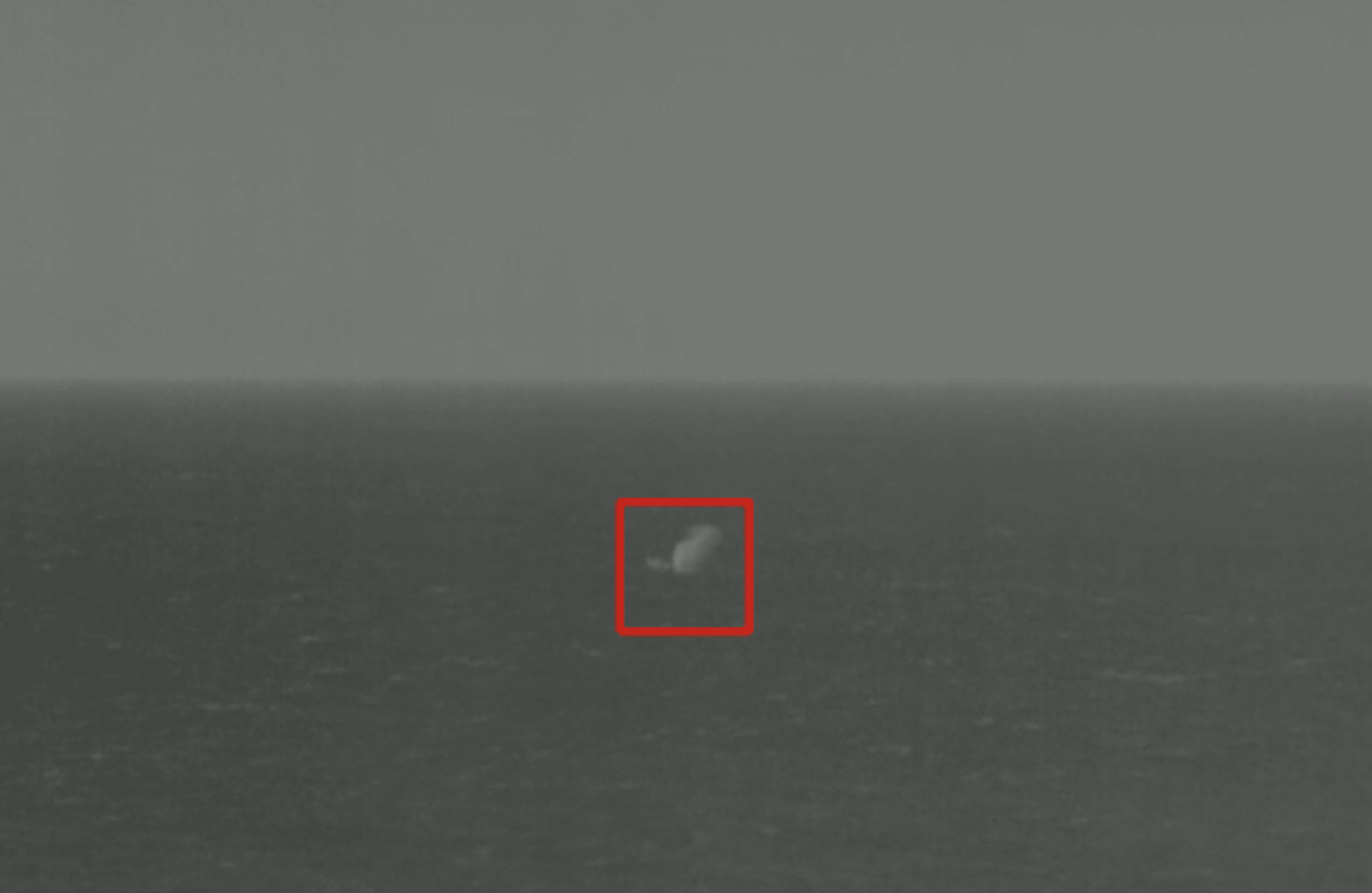Novel Technology
Marine Observer’s cus¬tom-built camera houses multiple long-wave infrared (LWIR) camera cores and an inertial navigation system for an electronically-stabilized and seamless field of view covering up to 90° per camera. The supporting software processes the video stream in real time and uses artificial intelligence (AI) to automatically detect whale blows and vessels. Operators are alerted to the presence of whales, and sightings are automatically archived. A human operator makes the final decision regarding the pres¬ence or absence of marine mammals. An additional benefit of Marine Observer is that it can provide a live, stabilized video stream that can be used to watch for objects at night that might pose a collision risk to the vessel and/or entanglement risk to towed gear. The camera is easy to use, the software is intuitive, and it can be operated by a single analyst.

A screenshot from the Marine Observer detection software. The red box highlights an automatic detection of a blow (spout) from a gray whale seen in the image. (Image credit: Toyon)
Leveraging AI
Humans are easily fatigued when staring at a display or out at the ocean for extended periods of time. By automating the detection process and cueing an operator to the location of an unconfirmed whale sighting, it streamlines the human’s role to the relatively simple process of confirming or denying its presence. This allows the system to perform what machines do well—carry out tedious, repetitive tasks—and allows the humans to do what they do well—make exquisite classification decisions. Toyon collects more data with each deployment, allowing the team to continue to improve the AI algorithms and further reduce the workload of the operator.
To find out more about Marine Observer, visit: www.marineobserver.com
This spotlight appeared in Environment, Coastal & Offshore (ECO) Magazine’s 2023 Winter edition Fisheries & Aquaculture, to read more access the magazine here.

